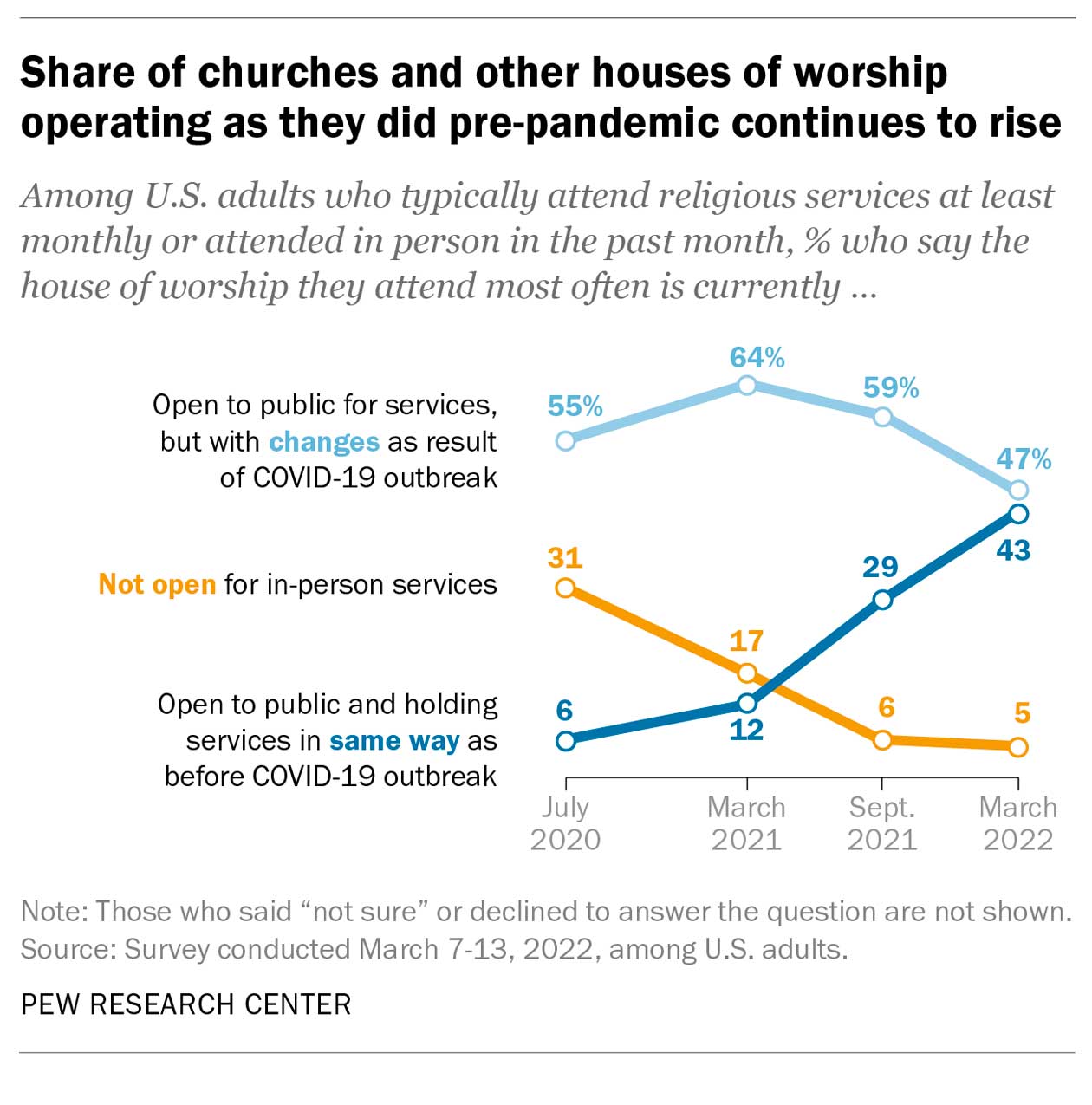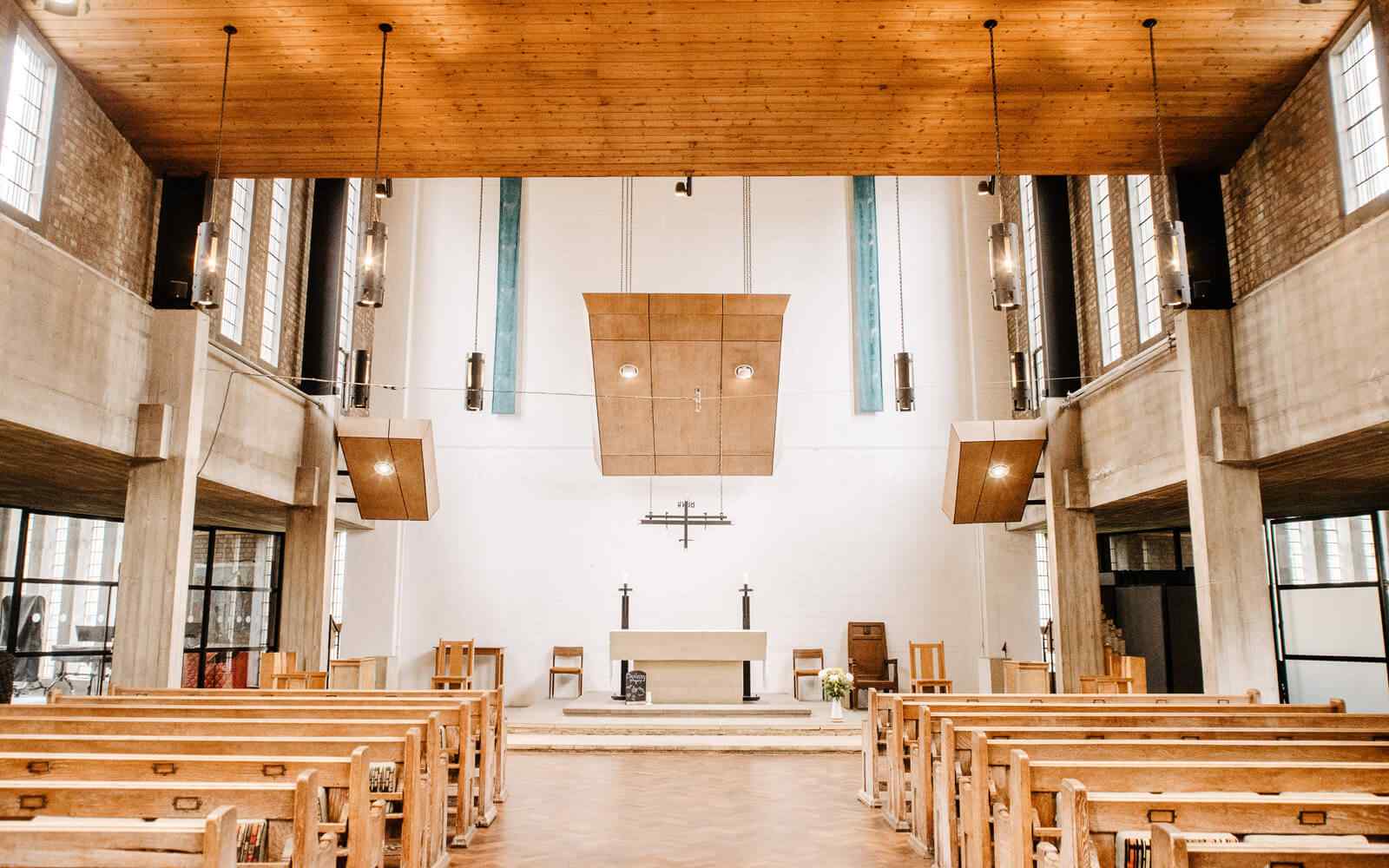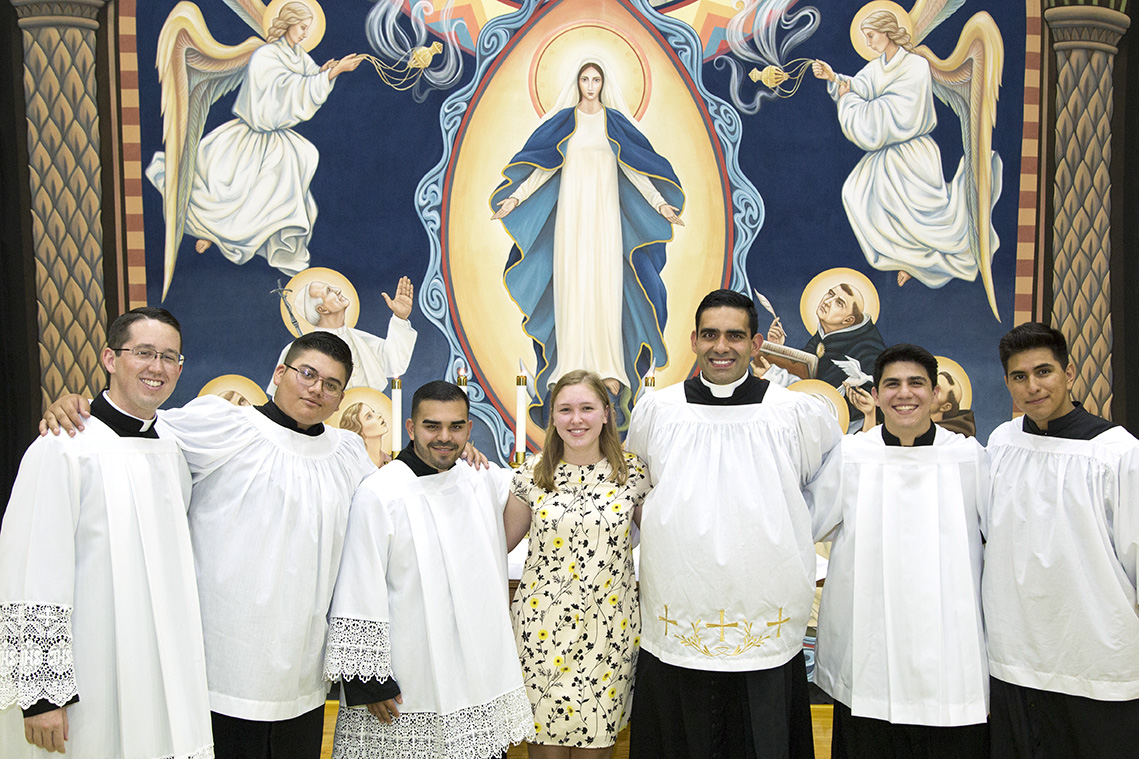CURRENT RESEARCH
- The percentage of Americans returning to church since the lifting last year of public health restrictions addressing the pandemic may have plateaued, according to the latest statistics from the Pew Research Center. While people steadily returned to in-person services during the first half of 2021, the trend appears to have reached a plateau. Around two-thirds of all people who usually attended church at least monthly said they were back in the pews in March (67 percent), which is roughly the same proportion as in September 2021 (64 percent). Evangelical churchgoers returned at the highest rate, even as their figures held steady at around 75 percent. Black Protestants have remained the most cautious, with a return rate of about 50 percent. The Pew report concludes: “Going into the third year since COVID-19, congregations and their leaders are left with the reality that the people who worshiped alongside them before may not be coming back.”(The Pew Research Center report can be downloaded from: https://www.pewresearch.org/fact-tank/2022/03/22/more-houses-of-worship-are-returning-to-normal-operations-but-in-person-attendance-is-unchanged-since-fall/)

- The long pandemic lockdowns in England have served to disabuse even devout churchgoers of the habit of attending services, a new survey suggests. Writing in the Church Times (March 18), sociologists Leslie Francis and Andrew Village report on the Covid-19 and Church 21 Survey they conducted among 826 participants who had attended church either once a month (96 percent) or once a week (84 percent) before the pandemic. Of these participants, nearly one-in-four (23 percent) had either given up on at least one activity of online worship or on going to church by the third lockdown, 15 percent had given up on online worship altogether, and 13 percent had given up on going to church. Ten percent had given up online worship, but not church services; eight percent had given up on church services, but not online worship; and five percent had given up on both. Most of those who had given up on online and in-person church did so because they felt that both forms, including socially-distanced services, did not work for them rather than because of the inconvenience of using technology or booking a place for worship, while 34 percent discovered they could do without church. The drift away from online services was especially prevalent for those under 40 and Anglo Catholics, who prefer a more liturgical worship, while those dropping in-person services tended to be women and extroverts. Analysis showed that keeping both kinds of worshipers depended on the quality and experience of worship.

Source: COVID-19 and Church-21, York St John University.
- While the number of priests around the world is holding steady, the number of Catholics continues to grow, suggesting that even some of the most vital parts of the Catholic world may face a priest shortage, according to a report appearing in the Catholic newsletter The Pillar (March 28). Brendan Hodge looks at the impact of vocations on the total number of diocesan Catholic priests, focusing on the net change measured by the number of ordinations against the number of priests who die or are laicized. He writes that in the 1970s and 1980s the net change in priests was negative because of the large numbers who sought laicization in the 1970s and the dramatic decrease in the number of ordinations in Europe and North America after Vatican II. In the 1990s and 2000s, the net change in the number of priests shifted in a positive direction due to the declining number of laicizations and the increasing number of ordinations in Africa and Asia. Hodge adds that in the last few years the net change in the number of priests has remained neutral because of a slowdown in diocesan priestly ordinations in the developing world and the death of priests ordained in the 1960s and early 1970s.While the number of diocesan priests remains flat, the number of Catholics around the world is continuing to grow. Both Europe and North America are seeing a net loss in the number of diocesan priests each year, while many developing countries see a positive net change each year. But a steady number of ordinations over the last 30 years suggests that the number of diocesan priests in the U.S. might stabilize in upcoming years. In countries such as Brazil and India, where the number of diocesan priestly ordinations remains much higher than the number 50 years ago, the net change in the number of priests remains positive, although the number of ordinations has declined somewhat in recent years. Hodge writes that in countries like Nigeria, where the number of diocesan priestly ordinations per year is steadily increasing, the annual net change in diocesan priests continues to rise.(The Pillar, https://www.pillarcatholic.com/p/is-there-a-global-vocations-crisis?s=w)

Source: The Catholic Sun (August 24, 2018).



